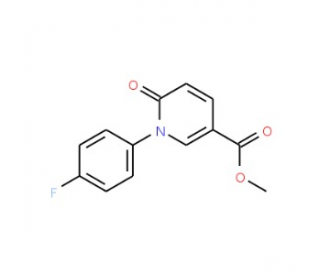详细说明
- Purity>95%, by SDS-PAGE under reducing conditions and visualized by silver stain
- Endotoxin Level<1.0 EU per 1 μg of the protein by the LAL method.
- ActivityMeasured by its ability to cleave the fluorogenic peptide substrate, Leu-AMC. The specific activity is >100 pmol/min/µg, as measured under the described conditions. See Activity Assay Protocol on www.RnDSystems.com
- SourceMouse myeloma cell line, NS0-derived Ser27-Leu930, with a C-terminal 10-His tag
- Accession #
- N-terminal Sequence
AnalysisSer27 - Predicted Molecular Mass105 kDa
- SDS-PAGE111 kDa, reducing conditions
| 2500-ZN | | |
| Formulation Supplied as a 0.2 μm filtered solution in Tris, NaCl and Glycerol. | ||
| Shipping The product is shipped with polar packs. Upon receipt, store it immediately at the temperature recommended below. | ||
| Stability & Storage: Use a manual defrost freezer and avoid repeated freeze-thaw cycles.
|
- Assay Buffer: 25 mM Tris, pH 8.0
- Recombinant Mouse Aminopeptidase PILS/ARTS1 (rmARTS1) (Catalog # 2500-ZN)
- Substrate: Leu-AMC (Bachem, Catalog # I-1240)
- F16 Black Maxisorp Plate (Nunc, Catalog # 475515)
- Fluorescent Plate Reader (Model: SpectraMax Gemini EM by Molecular Devices) or equivalent
- Dilute rmARTS1 to 2 µg/mL in Assay Buffer.
- Dilute Substrate to 200 µM in Assay Buffer.
- Load 50 µL of the 2 µg/mL rmARTS1 into a plate, and start the reaction by adding 50 µL of 200 µM Substrate. Include a Substrate Blank containing 50 µL Assay Buffer and 50 µL of 200 µM Substrate.
- Read at excitation and emission wavelengths of 380 nm and 460 nm, respectively, in kinetic mode for 5 minutes.
- Calculate specific activity:
| Specific Activity (pmol/min/µg) = | Adjusted Vmax* (RFU/min) x Conversion Factor** (pmol/RFU) |
| amount of enzyme (µg) |
*Adjusted for Substrate Blank
**Derived using calibration standard 7-amino, 4-Methyl Coumarin AMC (Sigma, Catalog # A-9891).
- rmARTS1: 0.1 µg
- Substrate: 100 µM
The mouse ARTS1 gene encodes aminopeptidase PILS (Puromycin-Insensitive Leucyl-Specific), which is also known as adipocyte-derived leucine aminopeptidase, type 1 tumor necrosis factor receptor shedding aminopeptidase regulator and ERAAP (the aminopeptidase associated with antigen processing in the endoplasmic reticulum) (1-3). The deduced amino acid sequence of mouse ARTS1 consists of a signal peptide and a large ectodomain. Widely expressed and releasing an N‑terminal amino acid (Leu), the enzyme may play a role in many processes such as antigen processing and angiogenesis.
- References:
- Miyashita, H. et al. (2002) Blood 99:3241.
- Serwold, T. et al. (2002) Nature 419:480.
- Schomburg, L. (2004) in Handbook of Proteolytic Enzymes. Barrett, et al. eds. p. 311, Academic Press, San Diego.
- Long Name:Aminopeptidase Puromycin-insensitive Leucyl-specific
- Entrez Gene IDs:51752 (Human); 80898 (Mouse)
- Alternate Names:Adipocyte-derived leucine aminopeptidase; A-LAP; A-LAPALAP; Aminopeptidase PILS; ARTS1; ARTS1aminopeptidase regulator of TNFR1 shedding; ARTS-1PILSAP; EC 3.4.11; EC 3.4.11.-; EC 3.4.11.1; endoplasmic reticulum aminopeptidase 1; endoplasmic reticulum aminopeptidase associated with antigen processing; ERAAP1; ERAP1; KIAA0525APPILS; PILS-AP; PILS-APERAAP; Puromycin-insensitive leucyl-specific aminopeptidase; Type 1 tumor necrosis factor receptor shedding aminopeptidase regulator












